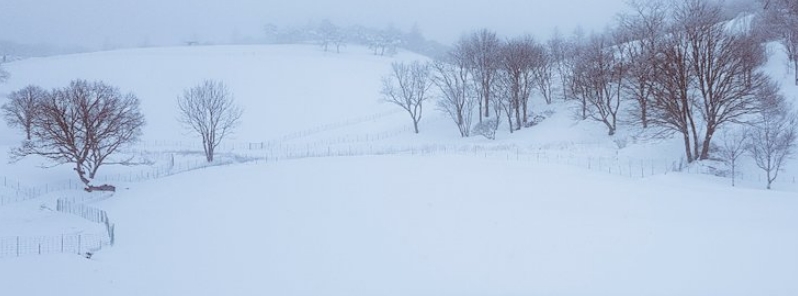Strong cold wave grips South Korea after warmest January on record

The strongest cold snap of the season has gripped South Korea this week, following their warmest January on record.
On February 6, 2020, the capital city of Seoul recorded -11 °C (12.2 °F). The temperature was registered at 06:34 LT (February 5 at 21:34 UTC), marking the coldest day of the season and the coldest since November 2019, according to the Korea Meteorological Administration (KMA). The mean January temperature in Seoul is -2.4 °C (27 °F). January is its coldest month, often with the lowest temperatures, almost always dropping below -10 °C (14 °F), and sometimes below -15 °C (5 °F).
According to Yonhap News Agency, the cold snap also hit other regions including Incheon– west of Seoul– plummeting to this season's coldest at -10.4 °C (13.3 °F) at 07:49 LT (February 5 at 22:49 UTC).
Temperatures in the metropolitan area and Gangwon Province plunged to the coldest temperature in the January-February period at -9.9 °C (14.2 °F) in Suwon– south of Seoul– and -10.7 °C (12.7 °F) in Gangneung on the east coast.
Meanwhile, in the southern region, Busan and Gwangju were "relatively unaffected by the cold spell," with temperatures hitting 1.1 °C (34 °F) and -3.2 °C (26.2 °F), respectively.

Last month was South Korea's warmest January since weather records began, said KMA on February 4. The average monthly temperature across the country was 2.8 °C (37 °F), the highest since KMA started operations in 1973.
It was 3.8 °C (6.8 °F) higher than the average January temperature recorded in the 1981 to 2010 period.
Also last month, the average daytime high was 7.7 °C (45.9 °F) and the average overnight low was -1.1 °C (30 °F), both the highest on record.
The southern resort island of Jeju also recorded its all-time warmest average temperature for January, at 9.2 °C (48.6 °F). This came after the island had an unprecedented warm December, with the average monthly temperature hitting 10.2 (50.4 °F), the second-highest since 1961 when KMA started records on the island.
The warm winter also resulted in the lowest monthly snowfall on record in December. The greatest snow accumulation over any 24-hour period was 0.3 cm (0.12 inches), the lowest figure for the said month.
Furthermore, the agency explained that the warm weather is attributed to the weakened power of a Siberian high-pressure system since mid-December, which brings cool air in a southerly direction. However, warm, moist air also stopped cool air in the north from moving further south.
Featured image credit: @JL_Kdiamond/Twitter

Commenting rules and guidelines
We value the thoughts and opinions of our readers and welcome healthy discussions on our website. In order to maintain a respectful and positive community, we ask that all commenters follow these rules.